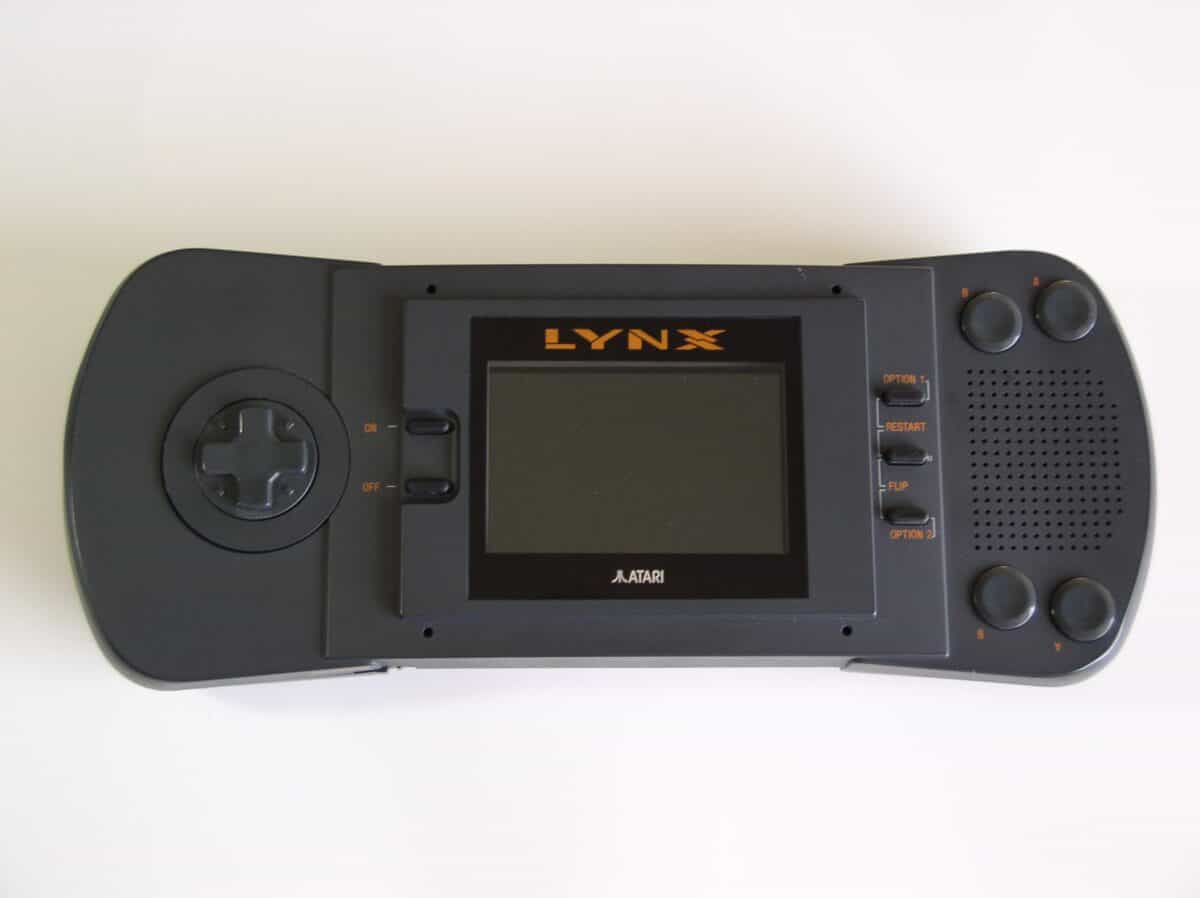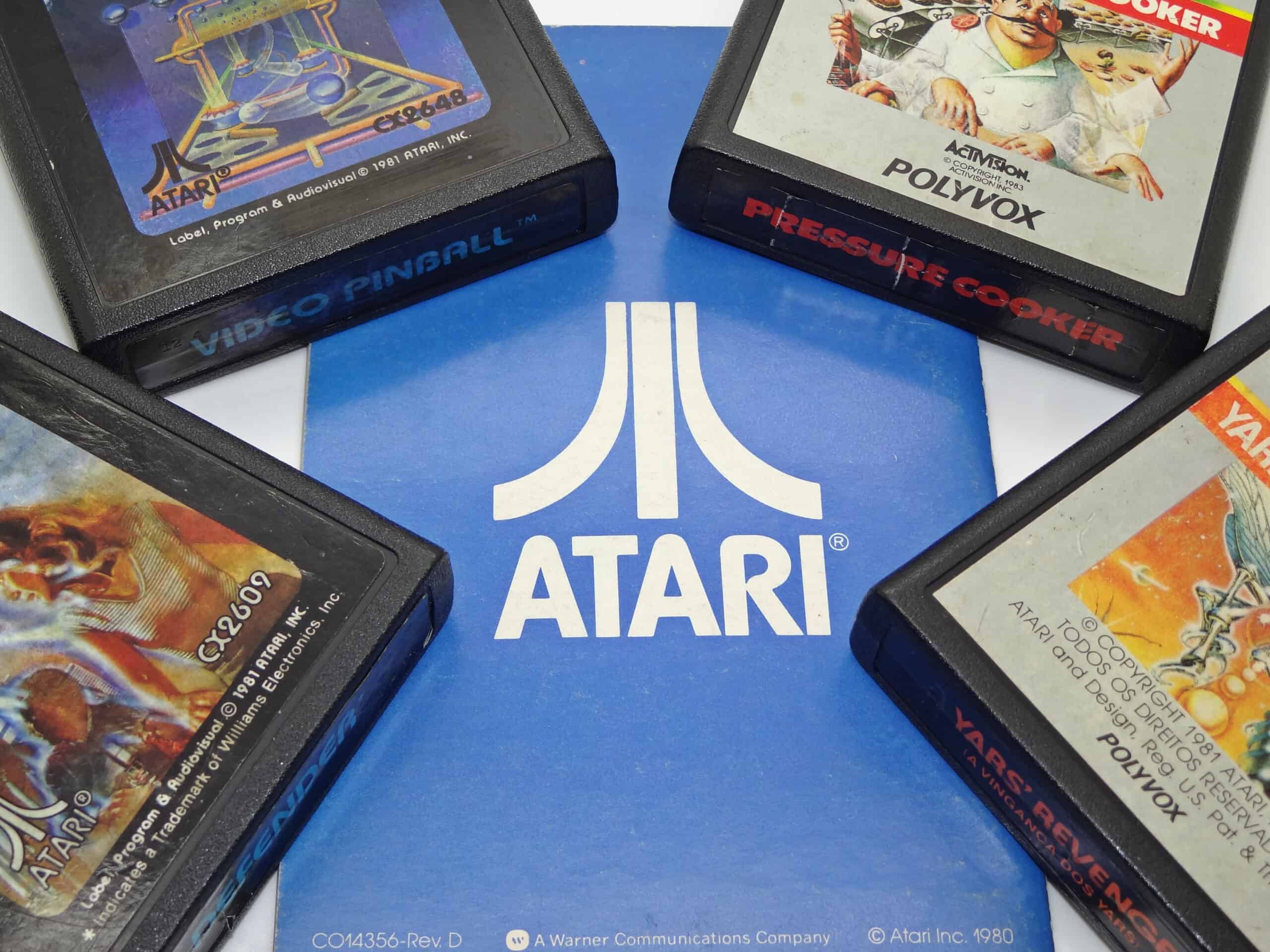5 Facts About the Atari Lynx
- It was the first handheld game console to launch with a color LCD screen.
- The Lynx was released in 1989, the same year as the Nintendo GameBoy.
- It wasn’t actually developed by Atari but by a third party called Epyx.
- It offered hybrid 8-bit and 16-bit power.
- The handheld console was originally known as the “Handy” before the name was changed to Atari Lynx.
The fourth generation of gaming is arguably one of the most memorable, thanks to the battle between the Super Nintendo and Sega Genesis.
It also marks the period that handheld (portable console) gaming really started to come into its own due to the launch of Nintendo’s GameBoy. The GameBoy would go on and find massive success while other consoles, like the Atari Lynx, would only see moderate success at best.
Why did the GameBoy succeed over the more powerful and color screen of the Atari Lynx? Was it because of the hardware or a significantly higher price tag? The answer isn’t as black and white as the GameBoy screen, as the Lynx had every opportunity to succeed but would fail to steal Nintendo’s handheld crown.
Let’s deep dive into the history and failure of the first handheld gaming device, the Atari Lynx, and get to the bottom of what befell this promising console.
Atari Lynx Specs
| Developer | Atari |
| Manufacturer | Epyx |
| Release Date | September 1, 1989 |
| Gaming Generation | Fourth generation |
| Lifespan | 1989-1995 |
| Price | $179 |
| Units Sold | 2 million |
| Launch Titles | Blue Lightning, California Games, Gates of Zendocon, Electrocop |
The History of the Atari Lynx: What to Know
Atari will forever remain in the hearts of gaming fans as one of the original console entrants in an industry that continues to grow exponentially. As much as Atari tried to keep its initial successes going, it was unable to do so and the Atari Lynx is proof that even good ideas aren’t always enough.
The story of the Atari Lynx begins in 1986 when two developers from Amiga, R.J. Mical and Dave Needle, then a manufacturer of personal computers, were asked to create a handheld gaming console by one of their former managers now working at Epyx. Their initial meeting would lead both Needle and Mical to the Epyx design team.
Development for the Handy, the console also known as the Lynx, would begin in early 1986 and be completed in 1987. The Lynx sported some incredible specs for its day with a 16-bit processor (that also played 8-bit games), a color LCD screen displaying more than 4,000 colors and advanced network capabilities. The Lynx was arguably more powerful than its non-portable console competitors when it began development with the NES and Sega Master System.
Atari Arrives
By the time the Atari Lynx was ready to go, Epyx’s fortunes had changed and they were no longer able to construct and distribute the device on their own. Nintendo and Sega declined to jump in and help, so Epyx turned to another big player in the video game space, Atari. Rumors have long indicated that Epyx was strong-armed by Atari but Atari’s partnership led to an agreement that they would handle both marketing and production while Epyx would focus on software.
Epyx would declare bankruptcy in 1989, the same year they first showed the Handy to the world at the Summer 1989 Consumer Electronics Show. With Epyx out of the way, Atari essentially owned the rights for the entire Handy project.
The name change to Lynx happened right before distribution in 1989 and Atari would claim to have sold more than 90% of the 50,000 units it initially shipped to stores. By the end of 1990, Atari would indicate more than 500,000 Lynx units had been sold.
Even with 75 titles available overall, the Lynx simply could not match the strength of Nintendo’s GameBoy, which was vastly outselling all of its handheld competitors. Of course, there were other factors that contributed to the downfall of the Atari Lynx.

Signs of Failure
On paper, by all accounts, the Atari Lynx should have been a massive success. It offered a great screen, plenty of power, and a good selection of software titles. So, why did a console that should have been a runaway success instead start to head for the console graveyard?
Many people initially place the blame on the size of the Atari Lynx. It was, to put it mildly, bulky. At 10 inches in length, 4.25 inches high, and 1.5 inches wide, it was big—much larger than the GameBoy and Sega’s Game Gear.
R.J. Mical has argued that early focus groups indicated users wanted a big console that was comfortable to hold but, when they delivered exactly that, public reception was too negatively focused on its large size.
On top of its size, the Lynx also had short battery life. Because it had both a 16-bit processor and a color screen, battery life was at a premium and, even with six AA batteries, it could only last 4 to 5 hours before needing new batteries.
The Plug is Pulled
By 1995, after the final version of the Atari Lynx was removed from the market, total sales amounted to around 2 million units. That’s compared to the 16 million units Nintendo had sold of its GameBoy. Even if the GameBoy lacked a color screen and 16-bit processing, it was more comfortable to hold and Tetris-mania took over.
One final factor that would play a big contributing role to the failure of the Lynx was Atari itself. By 1993, Atari had started to shift its priorities from the Lynx to the upcoming Atari Jaguar which led to the Lynx being put on life support for another two years.
After the commercial failure of the Atari Jaguar, Atari would pull the plug on all internal hardware development by the end of 1995. The once great gaming giant was no more.
The Atari Lynx Versions: Each Edition
There are no indicators that Atari had started to plan for a third generation of the Atari Lynx, but a Lynx II was launched to address initial hardware complaints.
Atari Lynx
The original Atari Lynx was a cartridge-based unit with a 16-bit processor and color LCD screen. It offered stunning graphical capabilities for its time but its high price tag forced parents to look at the lower-cost Nintendo GameBoy.
Still, the Lynx was ahead of its time with left and right-handed configuration and the ability to provide multiplayer support by connecting up to 15 Lynx units together at once. Titles like Double Dragon, Ninja Gaiden, Rampage, and Pit-Fighter would all help boost sales but never to the point of the GameBoy.
Atari Lynx II
In July 1991, Atari launched the second generation of the Atari Lynx, appropriately named the Atari Lynx II. The Lynx II offered a more compact design to address a chief complaint of the original as well as improved battery life and a headphone jack for stereo output.
Unfortunately, it was too little too late. Even with a power save option to add even more battery life and a reduced price to $99, Atari would only see a moderate increase in sales. The Lynx II was everything the original Lynx could have been and potentially changed the landscape of handheld gaming, but the iron grip of the GameBoy was too strong.
The Public Response
The public response to the Atari Lynx was tepid at best. For a system that never launched in Japan and saw limited distribution in Europe, the market was pretty much the Americas. By all accounts, the Lynx should have been the winner of the first round of portable console wars. Unfortunately, Atari’s poor marketing failed to properly hype the huge benefits of the Lynx, including its color screen and advanced processor.
There were some initially strong reviews from online publications, which praised the software, but the hardware was almost always knocked for its size. Now defunct magazine Dragon labeled the Lynx as being able to, “throw the GameBoy into the prehistoric age,” praising its display, launch titles, and multiplayer feature and giving it a five out of five rating.
Had the Lynx launched a year before the GameBoy, you might be reading a very different article today where the Lynx did exactly as the Dragon review mentioned. Unfortunately, when compared to the GameBoy, that isn’t how the Lynx is remembered.
The Lynx’s ability to last more than five years in the marketplace is a win in and of itself. It shows there was a small (if 2 million is small) but dedicated fanbase that helped keep the Lynx and Atari afloat.
There just wasn’t enough about the Lynx and its hardware to move the needle in Atari’s favor. It also didn’t help that the GameBoy included a game with purchase and Atari would not do so even with its higher price tag.
Up Next
- The Real Reason DeLorean Failed Spectacularly Oh DeLorean…how hard the mighty fall!
- The 5 Real Reasons Polaroid Failed Did you know Polaroid fell from grace? Find out why.
- The Real Reason Solyndra Failed Spectacularly Why did Solyndra fail miserably? Read on.
- The 5 Real Reasons Netscape Failed In the realm of epic fails, Netscape is right up there.
- The Real Reason Google Glass Failed Spectacularly Here’s a doozy–the failed Google Glass.
Want to Retire Early? Start Here (Sponsor)
Want retirement to come a few years earlier than you’d planned? Or are you ready to retire now, but want an extra set of eyes on your finances?
Now you can speak with up to 3 financial experts in your area for FREE. By simply clicking here you can begin to match with financial professionals who can help you build your plan to retire early. And the best part? The first conversation with them is free.
Click here to match with up to 3 financial pros who would be excited to help you make financial decisions.
The image featured at the top of this post is ©Anderson Reis/Shutterstock.com.
